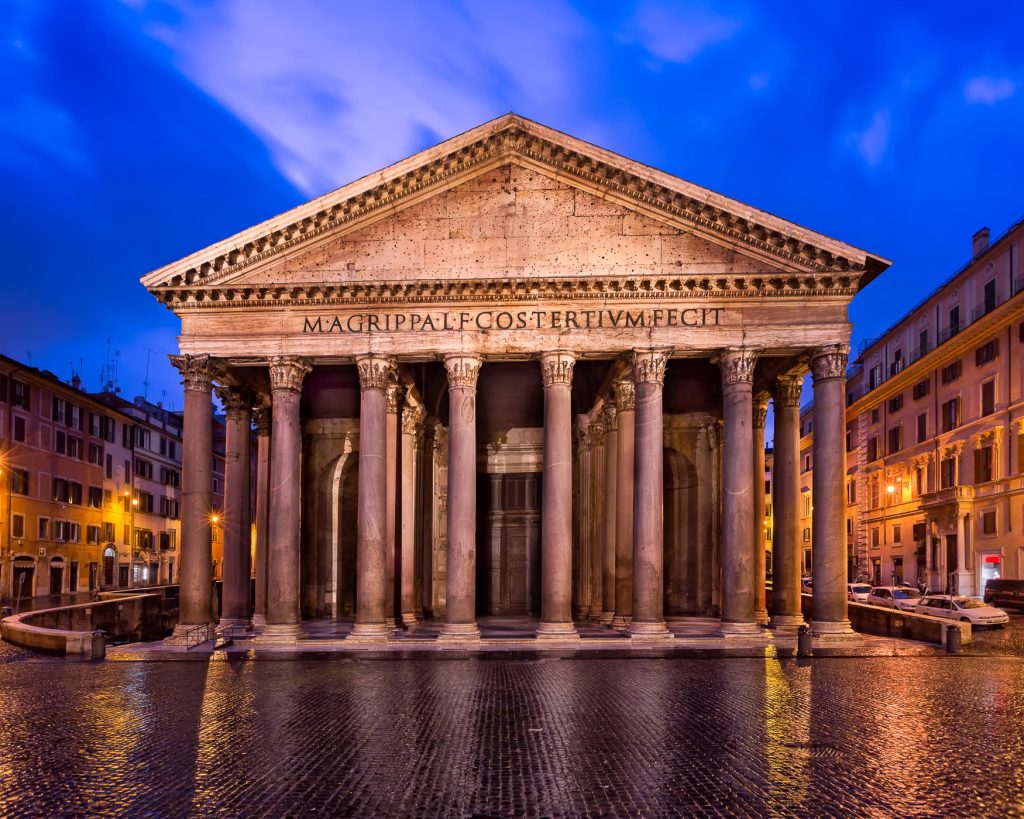All About Pantheon

The Pantheon: Rome’s Architectural Marvel
Nestled in the heart of Rome, the Pantheon stands as a stunning testament to ancient engineering and a symbol of the city’s rich history. This architectural wonder, originally built as a temple dedicated to the Roman gods, has withstood the test of time, captivating visitors with its grandeur and historical significance.
A Glimpse into History
The Pantheon was initially commissioned by Marcus Agrippa around 27 BC during the reign of Augustus. Its purpose was to honor all the gods of Ancient Rome, a reflection of the polytheistic beliefs prevalent at the time. However, the original structure was lost to fire in 80 AD, leading to its reconstruction under the direction of Emperor Hadrian, who completed the building around 120 AD. What stands today is a marvel of Roman engineering, combining both artistic beauty and functional design.
Architectural Mastery
One of the most striking features of the Pantheon is its massive dome, which remains the largest unreinforced concrete dome in the world. Spanning 43.3 meters (142 feet) in diameter, the dome is an engineering marvel that showcases the ingenuity of Roman builders. The design is both aesthetic and practical; the coffered ceiling not only adds to the visual appeal but also reduces the weight of the structure without compromising its integrity.
At the dome’s apex lies the oculus, a 9-meter-wide (30-foot) opening that serves as the only source of natural light in the building. This architectural element creates a celestial ambiance, allowing sunlight to stream in and illuminate the interior, while also serving a functional role in regulating temperature and air circulation.
The Interior Experience
Stepping inside the Pantheon is like stepping into another era. The circular interior, adorned with marble floors and elegant niches, creates a harmonious space that draws visitors into its historical embrace. The building’s design symbolizes the heavens, with the dome representing the sky and the circular shape signifying eternity.
Throughout its history, the Pantheon has also been a site of burial for notable figures, including the renowned Renaissance artist Raphael and several Italian kings. These tombs add to the site’s significance, making it not only a temple of worship but also a mausoleum of cultural icons.
From Pagan Temple to Christian Church
In the 7th century, the Pantheon was converted into a Christian church, known as Santa Maria ad Martyres. This transition played a crucial role in its preservation through the centuries, allowing it to survive the decline of the Roman Empire and the ravages of time. The church remains active today, holding regular services and special events, which further connects the site to contemporary life.
A Lasting Legacy
The Pantheon’s influence extends far beyond its own walls. Its architectural innovations have inspired countless structures around the world, particularly during the Renaissance and neoclassical movements. Buildings such as the U.S. Capitol and the Panthéon in Paris pay homage to the Pantheon’s iconic design, showcasing its lasting impact on architecture.
Visiting the Pantheon Today
Today, the Pantheon is one of Rome’s most visited landmarks, drawing millions of tourists eager to experience its magnificence. Located in the bustling Piazza della Rotonda, it offers a vibrant atmosphere where history and modern life intertwine. Entry is free, although donations are encouraged to help maintain this ancient marvel.
As visitors gaze up at the towering dome or wander through the serene interior, they are reminded of the Pantheon’s enduring legacy—a bridge between the past and the present, a celebration of human ingenuity, and a testament to the timeless beauty of Rome.
